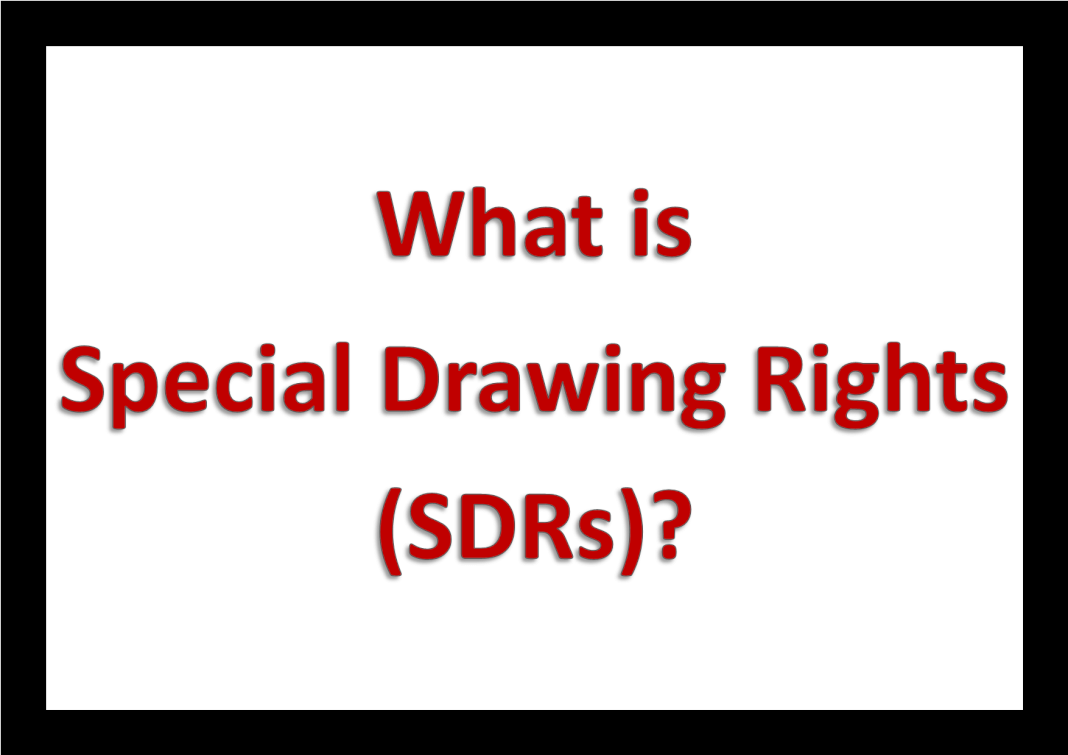For several developing countries, the Special Drawing Rights(SDR) issued by the IMF has become a vital international asset for availing other currencies (like the US $) in the context of the Covid crisis. In a remarkable step, the IMF has decided to issue $650 worth of new Special Drawing Rights (SDRs) and it has been made effective in August 2021.
What is Special Drawing Rights (SDRs)?
Special Drawing Rights (SDRs) is the international reserve asset created by the IMF in 1969 to enhance international liquidity. The Special Drawing Rights (SDR), as an international reserve asset, supplements the existing hard currencies of member countries and thus adds to the official reserves of members. SDRs are allocated freely to the member countries by the IMF in proportion to their quota holding in the IMF.
How SDR become beneficial for the members?
The utility of SDR for member countries is that they can use the allocated SDR to avail the currencies of other member countries that they would like to. In this way, they can get access to the hard currencies and can meet their balance of payment problem. SDR is not directly used to pay for transactions except for some rare selective cases. It is a reserve currency implying that it is not used in a conventional manner to settle transactions.
SDR also serves as the unit of account of the IMF and some other international organizations. Still, there are some remarkable features for SDR regarding its technical features.
Firstly, it is neither a currency nor a claim on the IMF. SDRs are not liabilities of the IMF, and an allocation of SDRs does not increase the Fund’s resources available for lending. Still, it adds to the international liquidity and helps SDR holders to get credible foreign currencies. Effectively, SDR is a potential claim on the freely usable currencies of IMF members. SDRs can be exchanged for these currencies. It directly increases members’ own international reserves.
Second, the IMF may allocate SDRs unconditionally to members (participants) who may use them to obtain freely usable currencies in order to meet a balance of payments need without undertaking economic policy measures or repayment obligations.
The two features of SDR – that (1) it is a potential claim on the freely usable currencies of members and (2) it is issued unconditionally to members tells us how it works.
| Allocation | Year | Value (SDR billion) |
| First allocation | 1970-72 | 9.3 billion |
| Second allocation | 1979-81 | 12.1 billion |
| Third allocation | 2009 | 204..2 billion |
| Fourth Allocation | 2021 | 456 billion |
Creation and allocation of SDR
Under the IMF’s Articles of Agreement, the IMF Executive Board may create unconditional liquidity in the form of SDRs, based on the recommendations of members with a weighted vote of at least 85%. Once created, general allocations of SDRs to member countries that participate in the SDR Department is made in proportion to their IMF quotas. So far, four allocations were made since the inception of SDRs in 1969. The fourth one was made on August 2nd 2021 was made by the IMF to tide over the Covid-19 induced economic crisis. The fourth allocation adds SDR 456 billion (or US $ 650 billion) to international liquidity.
*********










